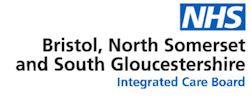

Pulmonary hypertension (PH) is an increase in mean pulmonary arterial pressure (PAP), which can be caused by, or associated with a wide variety of conditions.
Idiopathic pulmonary arterial hypertension (IPAH) is a rare disorder that can be defined as a sustained elevation in PAP and pulmonary vascular resistance, with normal pulmonary artery wedge pressure, in the absence of a known cause. It is a diagnosis of exclusion after other possible causes of PH have been excluded. It is a severe and often rapidly progressive illness in many cases. (1)
Secondary pulmonary hypertension is more common than IPAH and is seen in severe respiratory and cardiac disease, occurring in 18-50% of patients assessed for transplantation or lung volume reduction surgery, and in 7-83% of those with diastolic heart failure.
Between 0.5% and 4% of patients develop chronic thromboembolic PH after acute pulmonary embolism. There is an increased risk for patients presenting with large, recurrent or unprovoked clots.
Classification
The World Health Organization (WHO) has devised a classification system (2).
Patients are usually diagnosed in secondary care following referral or investigation of symptoms.
Progressive dyspnoea on exertion
Fatigue, weakness
Chest discomfort
Syncope or presyncope
Peripheral oedema
Abnormal heart sounds - loud pulmonary second heart sound, murmur of pulmonary regurgitation, systolic murmur of tricuspid regurgitation
Jugular venous distension
Hepatomegaly
Ascites
Peripheral oedema
These symptoms and signs may overlap with left heart failure and lung disease—consider PH in patients with unexplained dyspnoea and normal left heart findings.
There may also be signs of associated conditions, such as connective tissue disease or liver disease.
Patients who are severely unwell or have acute symptoms may need to be admitted
Rapid Access clinics may be appropriate if admission is not required such as:
If PH is suspected then consider the following investigations in primary care:
From primary care there is no specific directly accessible Pulmonary Hypertension Clinic available via eRS in BNSSG.
Patients should be referred to the appropriate specialty (e.g. respiratory, cardiology, haematology, paediatrics (if <16years)) depending on symptoms and/or suspected cause.
Consider urgent referral to appropriate specialty if:
Unexplained dyspnoea with raised NT-proBNP (see Heart Failure page)
Echo showing high echocardiographic probability of pulmonary hypertension particularly in the absence of a clear secondary cause for PH
Syncope with signs of right ventricular dysfunction
Known connective tissue disease with suspected PH
Advice and guidance services may also be helpful if there is uncertainty about the most appropriate referral route.
There is a tertiary pulmonary hypertension service which accepts referrals for patients (adults and children) from other secondary care specialists across the South West region and Wales but does not accept referrals directly from GPs.
Chronic Management (post diagnosis) in primary care:
Targeted PAH therapies are prescribed and handled by the National Pulmonary Hypertension Centres. University Hospital Bristol works closely with the team at the Hammersmith Hospital, Imperial College Healthcare NHS Trust.
There have been significant improvements in survival and quality of life in patients with PAH on therapies.
Idiopathic PAH patients who are untreated are known to have a median survival of 2-3 years (1).
Discussions regarding end of life care and ReSPECT forms should be considered when appropriate.
(1) Pulmonary Hypertension. About Pulmonary Hypertension | Patient
(2) Secondary Pulmonary Hypertension - StatPearls - NCBI Bookshelf (nih.gov)
This page has been written with the kind support of Radwa Bedair, Consultant Cardiologist, UHBW.
Efforts are made to ensure the accuracy and agreement of these guidelines, including any content uploaded, referred to or linked to from the system. However, BNSSG ICB cannot guarantee this. This guidance does not override the individual responsibility of healthcare professionals to make decisions appropriate to the circumstances of the individual patient, in consultation with the patient and/or guardian or carer, in accordance with the mental capacity act, and informed by the summary of product characteristics of any drugs they are considering. Practitioners are required to perform their duties in accordance with the law and their regulators and nothing in this guidance should be interpreted in a way that would be inconsistent with compliance with those duties.
Information provided through Remedy is continually updated so please be aware any printed copies may quickly become out of date.